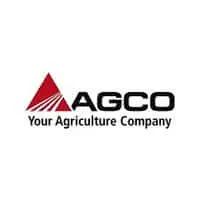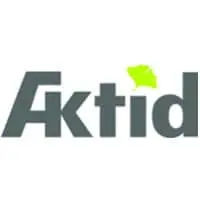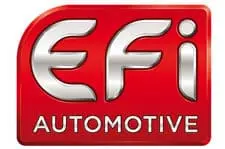STUDY CASES
These examples (mostly unnamed) illustrate some of the concrete contexts and contributions of the missions we run.
They will be updated regularly.

REDESIGN TO COST AND VALUE OF INDUSTRIAL EQUIPMENT
B2B co-development with a major client can be the best… or the worst!
For this company producing large industrial equipments, the partnership had seriously drifted: all in their desire to satisfy the client, the teams had tended to say yes to everything.
As a result, development dragged on, leaving the door open to more and more modifications, until the result was a far too complex machine, costly in terms of both direct costs and development expenses.
Impossible then to develop a competitive version from this base for other markets…
It was urgent to rethink the whole system in a spirit of strong simplification and to refocus costs on the functions that really provide a service.
- The Design to Cost and Value diagnosis quickly revealed the significant direct additional costs linked to secondary and negotiable requirements, before highlighting more than 50% of questionable costs (roughly equally divided into 3 thirds: lightening of specifications, fundamental redesign of the architecture and design simplifications).
- The research and evaluation of the solutions not only resulted in a radical cost saving (of the order of 30%): rid of unnecessary complexity, the machine became faster and more efficient. In addition, optimised layouts and well thought-out modularity offered significant productivity gains for future customers.
But the most exciting thing was without doubt to see all the players – sales, R&D, mechanics, automation engineers, industrialization, purchasing… although rather cautious at the beginning of the process – happily combining their energies and expertise in an efficient teamwork!
In 3 months, the action has enabled the creation of a particularly competitive and innovative offer on a wider international market, with the added bonus of a cross-functional operating method that has been acclaimed by the teams.
Just goes to show that a story that starts off badly can end well…
But can co-development be directly effective?
Of course it can! And here again, the agile and structured approach of Design to Cost and Value in client-supplier partnership has proven itself many times over:
- A functional « top-down » approach, which distinguishes from the outset between the imperative from the “nice to have” and leaves open flexibilities of specification,
- A macroscopic cost analysis that identifies early on the unavoidable costs and the economic “stair steps”,
- A « Flash » concept evaluations to frame investigations and inform arbitration in full visibility of the needs, costs and risks impacts.
- With the added bonus of a well-paced rhythm between in-house work sessions and joint sessions with the partner.
Yes, co-development is effective when the approach is open, flexible and structured!
EMERGENCY REDESIGN TO COST OF “MASS PRODUCTION” PRODUCT RANGES FOR THE BUILDING INDUSTRY
« We jumped out of the plane, now we have to sew the parachute quickly! »
So said the plant manager of a major French building equipment group.
The sharp drop in sales due to an ageing image and costs that were not competitive enough had led to the company taking the bull by the horns : the image and the catalogue were to be redesigned and sales prices were already being drastically reduced… at the cost of heavy financial losses!
It was urgent to radically reduce costs, without sacrificing Quality…
The Redesign to Cost of the two major product ranges was launched:
- The Functional Analysis identified the key requirements and the right needs,
- The Flash Benchmarking highlighted the significant differences in solutions and costs with the competition,
- The Value Analysis quickly listed the major potential savings: in total, almost 50% of questionable costs, including possible Qwick Wins
- The research and evaluation of solutions finally identified the real gains and their precise implementation programme:
the almost immediate 6% Quick Wins would become 25% real gains on both ranges, with deeper design and process improvements.
In less than 4 months, the Redesign to Cost had set the course for the expected profitability.

DESIGN TO COST OF A GAS CONDENSING BOILER
François VUILLAUME – R&D Director – ELM LEBLANC – Groupe BOSCH
“The problem was to reduce the cost of the products but in a context of strong constraints: as all the components are already defined, we tend to think that there is only one possible solution… and the work carried out allows us to demonstrate the opposite!
The technology is that of the condensing boilers – there are the traditional atmospheric burners, a technology that comes from the natural draught wood-burning fireplace – and for energy saving reasons we can now use this condensing technology which allows the flue gases to be cooled more and more energy to be withdrawn for the same amount of gas spent…
The advantage is that it is very direct! The method you propose is very flexible, very light, very reactive and can be integrated into the heavy procedures of any company. Companies like ours, and I believe others, have very efficient, very well established procedures, but which are in fact quite cumbersome, and you bring in a small method which acts very quickly and very locally, without disrupting the global procedures and which is compatible with them, and which makes it possible, for a certain period of time, to accelerate the functioning of normal procedures.
The gains are amazing! You are always amazed at the potential gains that can be made by putting everything back together.
It’s a method which clearly needs to be renewed, and finally, the interest of this work – because there is a training aspect – is that we integrate a way of doing things which we can develop internally. But in any case, it is still necessary to have an external incentive.”


DESIGN TO COST AND VALUE OF AN AIRCRAFT ENGINE COMPOSITE PLUG
Yann RICHARD – ARCOCE Program Ditrector – SNECMA PROPULSION SOLIDE – SAFRAN Group
“We are on an R&T programme. ARCOCE stands for “Arrière COrps Composite CEramique”; it is a programme which aims to develop a rear body part for civil aeronautics: the CFM56 engines and their replacement, the LeapX, are the engines of single-aisle aircraft. The A320 family for Airbus and the 737 family for Boeing will need new, “greener” engines that consume less and pollute less, in terms of NOX or CO2, but also in terms of acoustic emissions. The aim of this programme is to introduce a plug based on CMC, a ceramic matrix composite, which can withstand high temperatures to gain weight for civil aircraft.
With Arolys, we began a Functional Analysis – we came back to the real need of the part – then to define the Just Necessary in terms of definition/design. This phase, for our very upstream R&T programme, was very rich because it enabled us to highlight solutions that would have been overlooked. The purpose of phase 2 was to sort out the most convincing solutions.
The strong points of the Arolys approach were mainly to push people to think in a new context and to shed a great deal of light on the cost vision and cost levers to reduce the final production cost, which at t0 was much higher than the target set at the end of the programme.
In the end, we have a strong overall impression of efficiency: when we look back on what we did, we see very few wasted hours, which is a fear we have when we start the process; about 8 one-day sessions each, and in the end everything bore fruit, whether it was phase 1, creative, or phase 2, sorting. A very positive assessment of the process.
Today we can see the results of this work in our design and in our production range and so, to do it again: yes, and for a future programme of the scale of ARCOCE, we will do it again: yes.”
YOU HAVE A PROJECT?







































